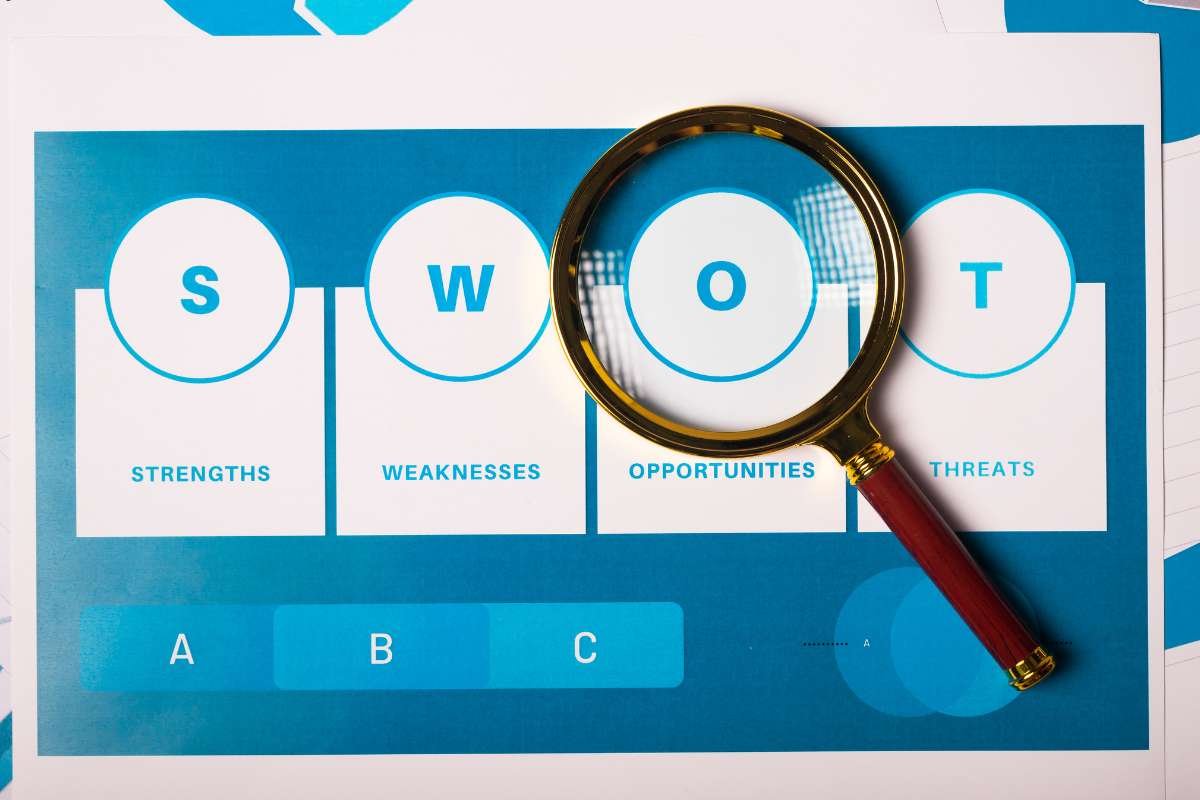It is often said that the change started from home. To take this under consideration, if you want to adapt, you need to improve yourself to reach your goals. To grow in today’s world, increasing understanding about yourself will help you from both personal and professional perspectives. Most businesses use the technique of Swot analysis to develop strategies and ways to grow in the market.
Just like that, even an individual can apply the same framework for their self-discovery and personal growth. This will give you a chance to know yourself, your pros and cons, by working towards becoming a better version of yourself.
In this article, we will be exploring swot personal analysis by using a guide with examples and referring to some tips to improve and upgrade yourself.
Table of Contents
What is SWOT Personal Analysis?
SWOT personal analysis is a strategic framework used to evaluate your Strengths, Weaknesses, Opportunities, and Threats. It’s a powerful tool for self-assessment, allowing you to gain valuable insights into your capabilities, limitations, and the external factors that can impact your progress. By understanding these elements, you can make informed decisions, set realistic goals, and develop effective strategies for personal and professional development. It’s a structured approach to understanding yourself better.
A Guide to Conducting Your SWOT Personal Analysis (with Examples)
Let’s break down each component of SWOT personal analysis with illustrative examples:

1. Strengths
These are your positive attributes, skills, and advantages. They are the things you do well, and that set you apart.
- Example 1: “Excellent communication skills, both written and verbal.”
- Example 2: “Proficient in data analysis and interpretation.”
- Example 3: “Highly organized and detail-oriented.”
- Example 4: “Strong work ethic and dedication to achieving goals.”
- Example 5: “Creative problem-solving abilities.”
2. Weaknesses
These are areas where you could improve or where you have disadvantages compared to others. Identifying your weaknesses is crucial for personal growth.
- Example 1: “Procrastination tendencies.”
- Example 2: “Lack of experience in public speaking.”
- Example 3: “Difficulty delegating tasks.”
- Example 4: “Struggling with time management.”
- Example 5: “Limited knowledge in a specific area relevant to my career.”
3. Opportunities
These are favorable external factors that you can leverage to your advantage. They are often related to trends, changes in the market, or new possibilities.
- Example 1: “Growing demand for professionals with my skillset.”
- Example 2: “Availability of online courses and training programs to enhance my skills.”
- Example 3: “Networking opportunities within my industry.”
- Example 4: “Emerging technologies that I can learn and utilize.”
- Example 5: “Potential for mentorship or sponsorship within my organization.”
4. Threats
These are external factors that could hinder your progress or pose challenges to your goals. Identifying threats allows you to prepare for potential obstacles.
- Example 1: “Increased competition in my field.”
- Example 2: “Rapid technological advancements that could make my skills obsolete.”
- Example 3: “Economic downturn or job market instability.”
- Example 4: “Changes in industry regulations or policies.”
- Example 5: “Limited resources or funding for professional development.”
Read More: SWOT vs. TOWS Analysis: Understanding the Differences and Applications
Conducting Your Analysis:
- Brainstorm: Start by brainstorming each category individually. Don’t overthink it at this stage; just jot down everything that comes to mind.
- Prioritize: Once you have a comprehensive list, prioritize the items in each category. Focus on the most significant strengths, weaknesses, opportunities, and threats.
- Analyze: Analyze the interconnections between the different categories. How can you leverage your strengths to capitalize on opportunities? How can you address your weaknesses to mitigate threats?
- Develop Strategies: Based on your analysis, develop specific strategies and action plans to capitalize on your strengths, address your weaknesses, seize opportunities, and mitigate threats.
Benefits of SWOT Personal Analysis
Engaging in SWOT analysis offers a multitude of benefits:

- Self-Awareness: It provides a deeper understanding of your strengths and weaknesses, leading to increased self-awareness.
- Goal Setting: It helps you set realistic and achievable goals based on your capabilities and limitations.
- Career Development: It facilitates career planning by identifying areas for skill development and potential career paths.
- Improved Decision-Making: It empowers you to make informed decisions based on a comprehensive understanding of your internal and external environment.
- Personal Growth: It fosters personal growth by highlighting areas where you can improve and develop.
- Strategic Thinking: It encourages strategic thinking by considering both internal and external factors that can impact your progress.
Read More: Proven Consulting Process: A Step-by-Step Guide for Success
Tips for Effective SWOT Personal Analysis

- Be Honest and Objective: The key to a successful SWOT analysis is honesty. Be truthful about your strengths and weaknesses, even if it’s uncomfortable.
- Seek Feedback: Ask trusted friends, colleagues, or mentors for their perspectives on your strengths and weaknesses. Their input can provide valuable insights.
- Focus on Actionable Items: Don’t just list your SWOT elements; develop concrete action plans to address them.
- Regularly Review and Update: Your SWOT analysis is not a one-time activity. Regularly review and update it as your circumstances and goals change.
- Use it as a Tool for Growth: Don’t be discouraged by your weaknesses. Use your SWOT analysis as a tool for growth and development.
Addressing Weaknesses
While the SWOT analysis highlights weaknesses, it’s crucial to remember that these are areas for potential growth. Don’t view them as insurmountable obstacles. Instead, use them as a roadmap for self-improvement. Develop strategies to mitigate your weaknesses, whether through training, mentorship, or simply practicing and developing new skills. The process of conducting a SWOT personal analysis isn’t just about identifying areas of improvement; it’s about taking proactive steps to become the best version of yourself.
Read More: Navigating Success: The Dynamics and Strategies of Marketing Management
Conclusion
Swot personal analysis can turn into a versatile and powerful tool for someone who is looking for ways of personal and professional growth. Swot allows you to analyze your strengths, weaknesses, opportunities, and also threats. So you can give clarity and a better understanding of yourself and your surroundings. Self-awareness will also trigger you to make sound decisions, set some practical expectations, and develop effective strategies to reach your goals.
It might be a small exercise for self-improvement, but it can help reshape your future in the long run. Regularly update your Swot analysis to keep track of your improvement and growth throughout the journey. So unlock your potential and achieve your goals by being honest and truthful to yourself. Swot analysis helps take a step towards self-improvement and development.
FAQ:
1. What is the personal SWOT analysis?
A personal SWOT analysis helps to discover hidden opportunities and growth prospects you may not have noticed. It enables you to address areas for improvement and to manage anything that could hinder progress.
2. What are some examples of SWOT analysis?
Strengths: A strong brand, A loyal customer base, A skilled workforce, A high-traffic location, and A successful marketing strategy.
3. What are personal strengths and weaknesses?
Strengths include knowledge, attributes, skills, and talents. Weaknesses are just the opposite. Weaknesses are defined as character traits or skills that are considered negative or not as well developed. Weaknesses include blind spots, poorly developed skills, or problematic personal behaviors










